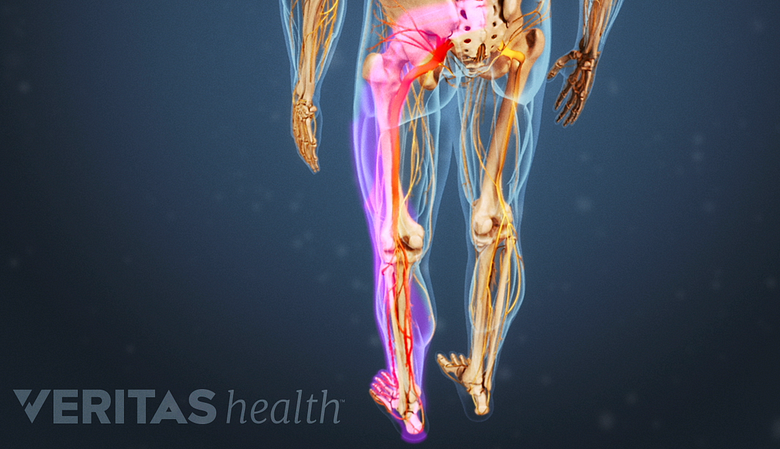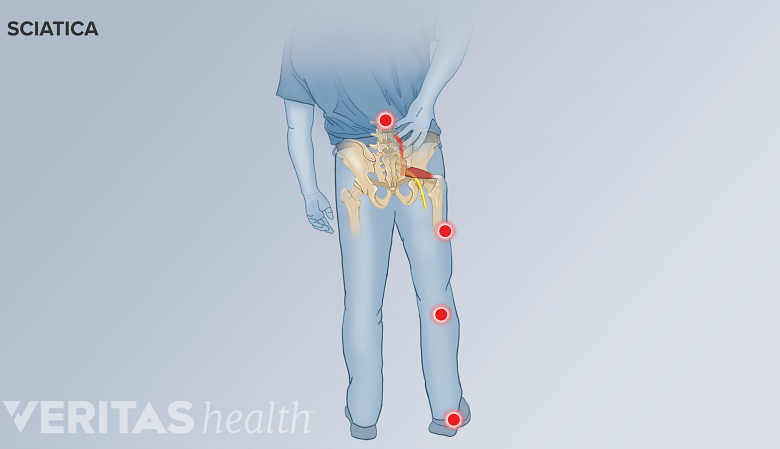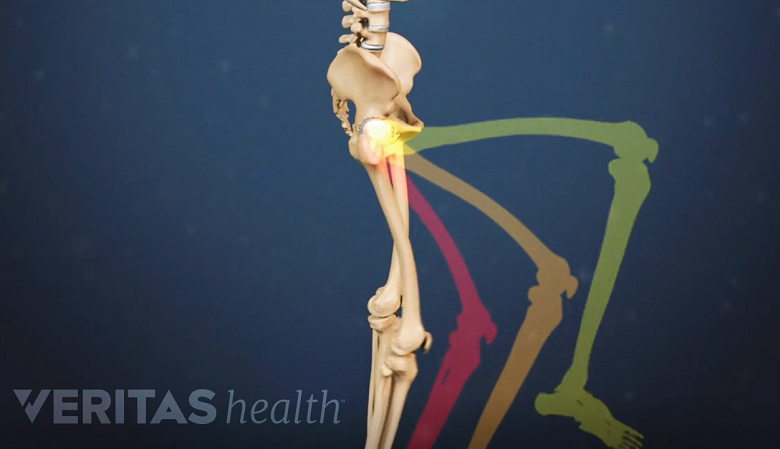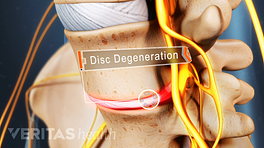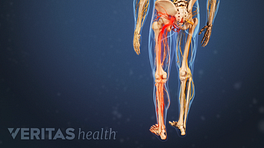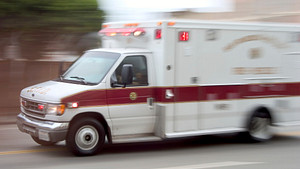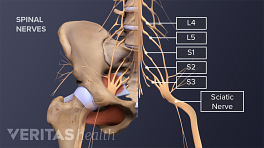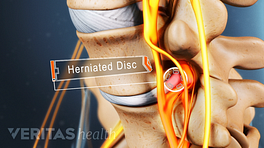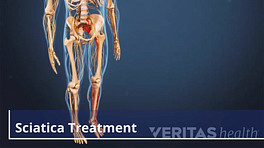Sciatica symptoms are highly variable due to the many complex and interwoven nerve-related elements that are involved. Examples of how people describe the symptoms range from:
- A pins and needles sensation that comes and goes along the thigh or leg
- An icy, piercing pain in the foot
- A feeling that warm water has suddenly spilled down one thigh
- A vague stabbing pain deep in the buttock
These symptoms may also overlap, alternate, or vary with time when more than one nerve root is affected in the lower back—such as by a herniated disc and a degenerated disc in adjacent spinal segments irritating more than one nerve root at the same time.
In This Article:
- Understanding Sciatica Symptoms: Pins and Needles, Numbness, Icy, and Burning
- The Essentials of Sciatic Nerve Pain Patterns
- Challenges in Diagnosing the Cause of Sciatica
- Sciatica Causes and Symptoms Video
Frequency of Sensory Difficulties in Sciatica
Research indicates that many people with sciatica tend to experience sensory difficulties and other abnormal sensations 1 Laroche F, Perrot S. Managing Sciatica and Radicular Pain in Primary Care Practice. Springer Science & Business Media; 2013. :
- 63% to 72% of people feel pins and needles or tingling in the affected leg
- 35% of people experience radiating pain of varying severity
- 27% of people experience numbness
The range of nagging and possibly excruciating symptoms can stem from a variety of underlying conditions and become progressively worse over time.
Common Patterns of Sciatica Symptoms
Sciatica symptoms can cause searing pain along the course of the long sciatic nerve.
While sciatica symptoms vary, the most common patterns are as follows 2 Fishman L, Ardman C. Sciatica Solutions: Diagnosis, Treatment, and Cure of Spinal and Piriformis Problems. W. W. Norton & Company; 2007. , 3 Koes BW, van Tulder MW, Peul WC. Diagnosis and treatment of sciatica. BMJ. 2007;334(7607):1313-1317. doi:10.1136/bmj.39223.428495.BE :
- Pain along with a pins and needles sensation, often felt on the outer side of the calf, extending to the web-space of the first toe
- Leg weakness in addition to the above pins and needles feeling while walking on the toes or heels
- Burning pain along the back of the thigh and calf, extending to the heel and causing stiffness in the leg
- Pain while sitting along with tingling in the back of the thigh and numbness in the toes, which are relieved while standing
- Aching in the lower back with electric shock-like pain along the back of the thigh and leg, with possible tingling, numbness, and weakness
- Warmth or burning pain along the outer side of the lower thigh and calf
- Radiating pain to the foot or toes
- Numbness and paresthesia occurring together in the same area(s)
These symptoms may be constant or usually absent, with sudden flare ups due to an inciting event, such as lifting a heavy object or bending down for an extended period of time (for example, while cleaning).
Sciatica symptoms typically extend below the knee
The sciatica symptoms originate in the low back and extend into the leg, terminating in the toes.
The commonly involved nerve roots in sciatica are L4, L5, and/or S1. 4 Hernández C.P., Sanchez N., Navarro-Siguero A., Saldaña M.T. (2013) What is Sciatica and Radicular Pain?. In: Laroche F., Perrot S. (eds) Managing Sciatica and Radicular Pain in Primary Care Practice. Springer Healthcare, Tarporley. https://doi.org/10.1007/978-1-907673-56-6_1 The course of these nerves, as they pass down the leg, typically extends into the calf and terminates in the foot or toes—causing the symptoms to spread along this path.
If more than one nerve root is affected, overlapping symptoms can occur. Additionally, if the nerve root is affected on both sides of the spine, the symptoms tend to be bilateral, although this occurrence is rare.
Learn more about Sciatica Symptoms
Leg pain is worse than the back pain
Sciatica is more disabling than back pain alone because while the problem originates in the lower back, the symptoms pass through the nerves, also called radiculopathy or radicular pain, and are felt away from the source of the problem. The lower back may still become painful due to inflammation of muscles or soft tissues surrounding the spinal problem, but the main disabling symptoms travel down the leg through the nerves.
Leg weakness is experienced in almost all types of sciatica
A varying degree of leg weakness is a common symptom of sciatica.
A varying degree of leg weakness is a common symptom of sciatica because many types of spinal nerve root issues interfere with effective signal communication between the brain and the leg muscles—affecting leg movements, such as walking, running, lifting the leg, or flexing the foot. Leg weakness may also be interpreted by many as a pulling sensation in the leg.
It is important to note that increasing backache experienced together with worsening sciatica may indicate a serious disorder, especially if the pain does not vary with exertion but steadily gets worse. 6 Ombregt L. A System of Orthopaedic Medicine. Churchill Livingstone Elsevier; 2013.
See When Sciatica Pain Is a Medical Emergency
There are many components in the formation and configuration of the sciatic nerve and surrounding structures, which contribute to the variations and nuances of sciatica symptoms. For example, an inflamed spinal nerve root may cause symptoms in well-defined areas of the skin, called the dermatomes, and specific groups of muscles, called myotomes. Sciatica symptoms may also depend on the type of nerve fiber affected, resulting in purely sensory, purely motor, or mixed symptoms within these dermatomes and myotomes.
- 1 Laroche F, Perrot S. Managing Sciatica and Radicular Pain in Primary Care Practice. Springer Science & Business Media; 2013.
- 2 Fishman L, Ardman C. Sciatica Solutions: Diagnosis, Treatment, and Cure of Spinal and Piriformis Problems. W. W. Norton & Company; 2007.
- 3 Koes BW, van Tulder MW, Peul WC. Diagnosis and treatment of sciatica. BMJ. 2007;334(7607):1313-1317. doi:10.1136/bmj.39223.428495.BE
- 4 Hernández C.P., Sanchez N., Navarro-Siguero A., Saldaña M.T. (2013) What is Sciatica and Radicular Pain?. In: Laroche F., Perrot S. (eds) Managing Sciatica and Radicular Pain in Primary Care Practice. Springer Healthcare, Tarporley. https://doi.org/10.1007/978-1-907673-56-6_1
- 6 Ombregt L. A System of Orthopaedic Medicine. Churchill Livingstone Elsevier; 2013.

